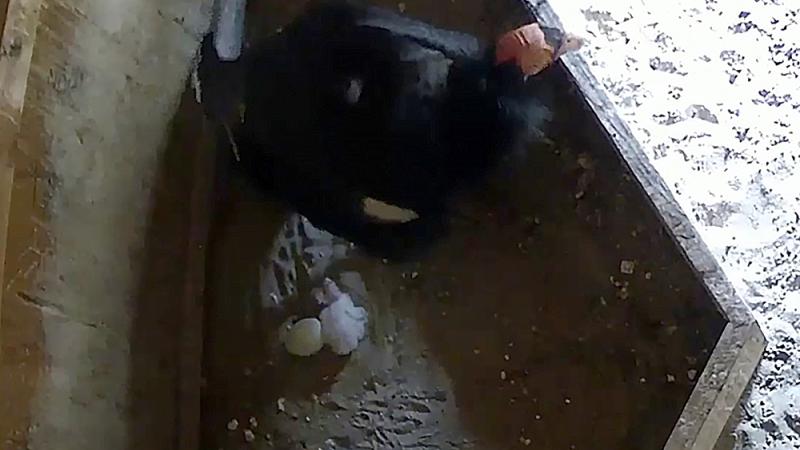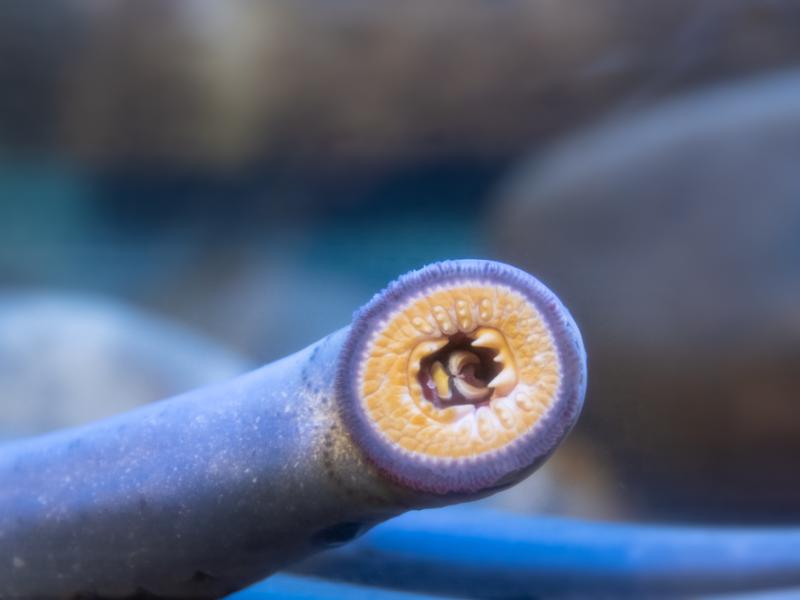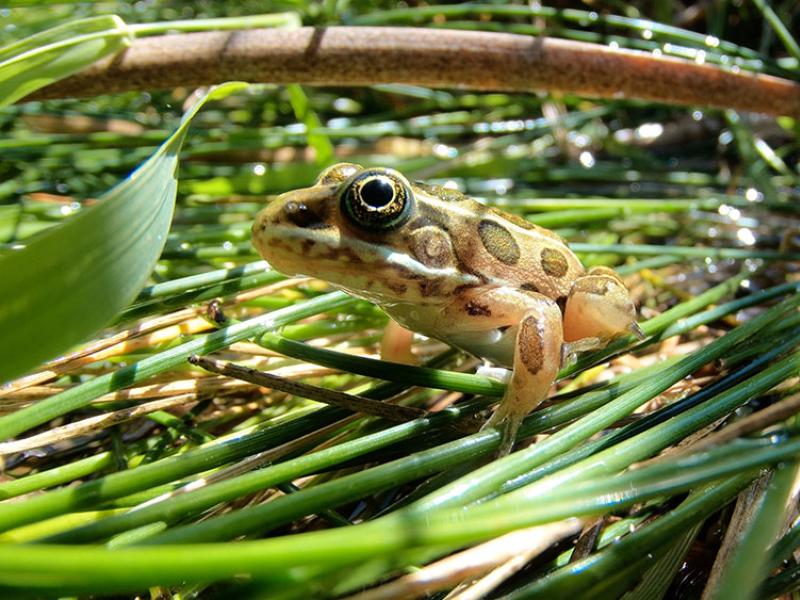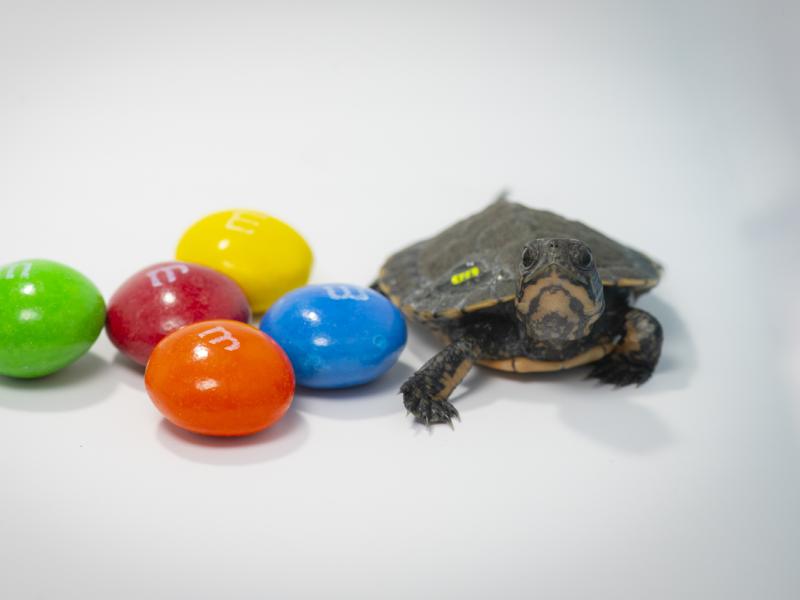Egg-citing news! Zoo welcomes first condor chick of 2019

With a new chick and 7 fertile eggs, Oregon Zoo condors are on track for a great year
A fluffy new chick came out of its shell at the Oregon Zoo's Jonsson Center for Wildlife Conservation this week, kicking off what looks to be great year for the condor recovery effort.
Since late January, condors at the offsite facility have been laying the groundwork for species recovery one egg at a time. The condors have laid nine eggs so far this year, with five confirmed to be fertile and three additional condor eggs arriving from other facilities. One has hatched, and the rest are expected to arrive in the coming weeks.
"Each new egg is important to the California condor's comeback," said Kelli Walker, the zoo's lead condor keeper. "Every chick that hatches makes a difference."
Care staff pay close attention during that critical first week after hatching, when condor chicks are particularly vulnerable. On Monday afternoon, Walker, who was watching a video feed of the nest, noticed the newly hatched chick was left alone and acted quickly to save it.
"Once we realized the chick had been left alone, we immediately moved it to the ICU to warm up. The next morning, we placed it in a new nest to be raised by a foster parent," said Walker. "Malibu, the chick's new mom, began tending to her baby right away. She hasn't left the nest box since."
Condor parents take turns brooding their chicks, Walker said, and the chicks will stay with their parents for at least eight months before moving to the Jonsson Center's pre-release pens for about a year and a half. Eventually, they will travel to a wild release site to join free-flying condors in California, Arizona or Baja Mexico. With so few of the birds left in the world, each new chick is vitally important to the species' survival.
The California condor was one of the original animals included on the 1973 Endangered Species Act and is classified as critically endangered. In 1982, only 22 individuals remained in the wild and by 1987, the last condors were taken into captivity in an attempt to save the species from extinction. Thanks to breeding programs like the Oregon Zoo's, condor numbers now total around 450, with the majority of those flying free.
Since 2003, 72 chicks have hatched at the Jonsson Center, and 56 Oregon Zoo-reared birds have gone out to field pens for release. In addition, several eggs laid by Oregon Zoo condors have been placed in wild nests to hatch. Staff hope the 2019 breeding season will provide another boost to those totals.
Condors are the largest land birds in North America with wingspans of up to 10 feet and an average weight of 18 to 25 pounds. They are highly intelligent and inquisitive, and they require a tremendous amount of parental investment in the wild.
The California condor had a long history in Oregon. Lewis and Clark saw the large birds as they traveled along the Columbia River. Local archaeologists have unearthed 9,000-year-old condor bones from Native American middens, and condors were a common motif for the designs of Oregon's Wasco people, who lived along the Columbia River between The Dalles and Cascade Locks.
Accumulated lead poisoning — a problem that plagues all raptors and scavengers — is the most severe obstacle to the California condor's recovery as a species. As the birds feed on carrion and other animal carcasses, they can unintentionally ingest lead from bullet fragments. Lead consumption causes paralysis of the digestive tract and results in a slow death by starvation. Lead also causes severe neurological problems, so the birds not only starve but also suffer from impaired motor functions.
Through its Non-Lead Hunting Education Program, the Oregon Zoo aims to inspire hunters — traditionally some of the strongest supporters of wildlife and habitat conservation — to continue that legacy by choosing non-lead ammunition.
The Oregon Zoo's condor recovery efforts take place at the Jonsson Center for Wildlife Conservation, located in rural Clackamas County on Metro-owned open land. The remoteness of the facility minimizes the exposure of young condors to people, increasing the chances for captive-hatched birds to survive and breed in the wild.
California condor breeding programs are also operated at San Diego Zoo's Wild Animal Park, the Los Angeles Zoo and the Peregrine Fund's World Center for Birds of Prey in Idaho. LightHawk, a nonprofit conservation flying organization, also provides support for these condor-recovery efforts.
More News

Zoo welcomes 'very special group' of Pacific lamprey
Twenty five Pacific lamprey arrived at the zoo from nearby Willamette Falls.June 26, 2025

A leap forward: Endangered frogs hit survival milestone
For the first time, zoo-reared northern leopard frogs survived a winter in the wild at the Columbia National Wildlife Refuge.June 12, 2025

Tiny Endangered Turtle Hatchlings Arrive At Zoo
Seventeen northwestern pond turtle hatchlings, each about the size of a walnut, are making themshellves at home at the Oregon Zoo this summer.June 4, 2025

